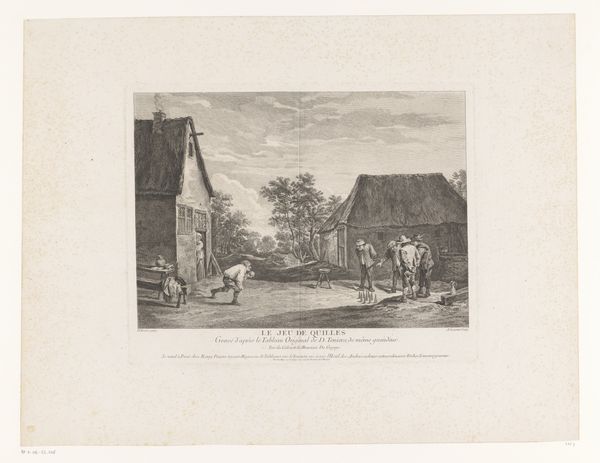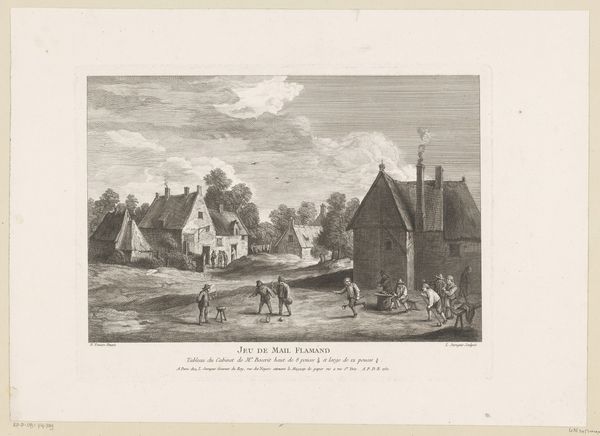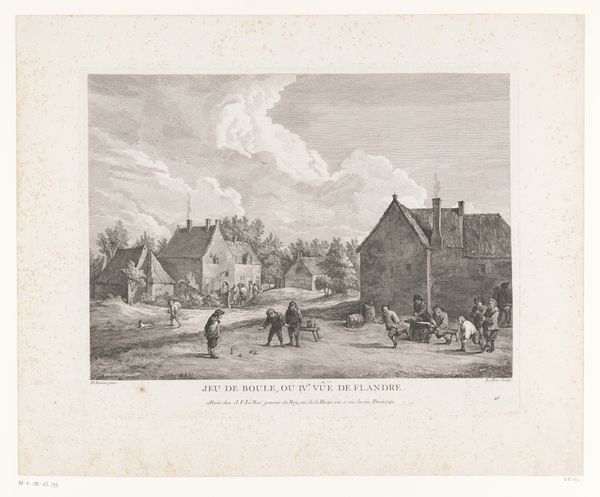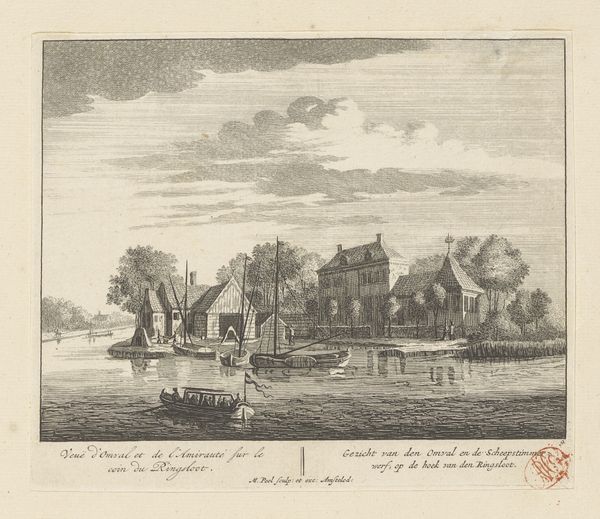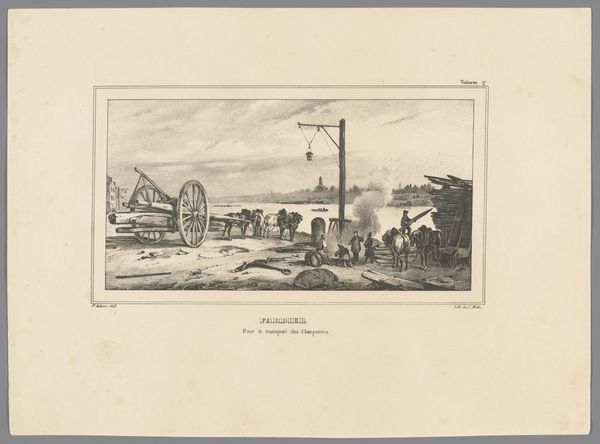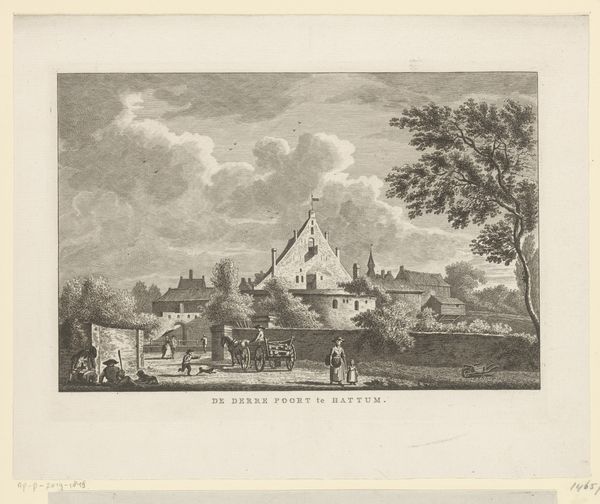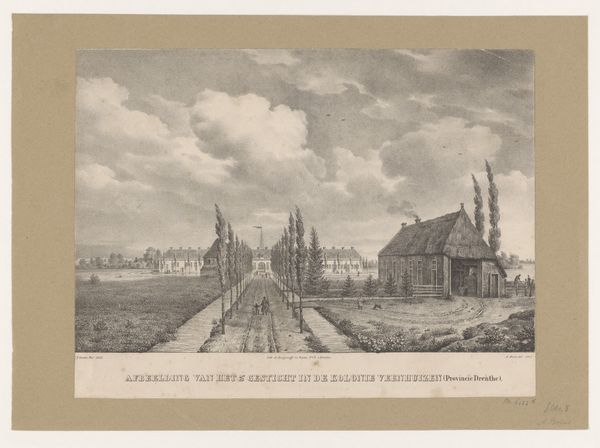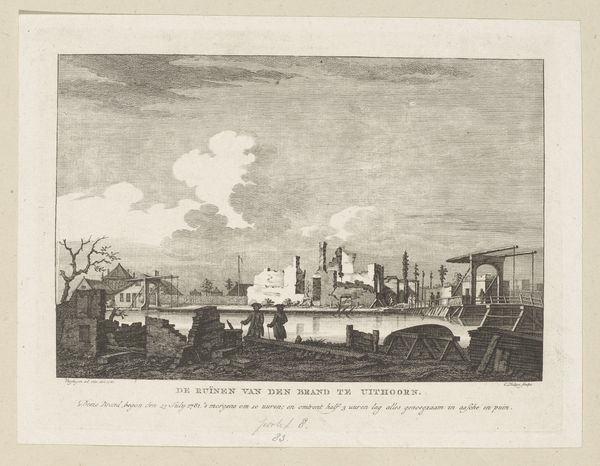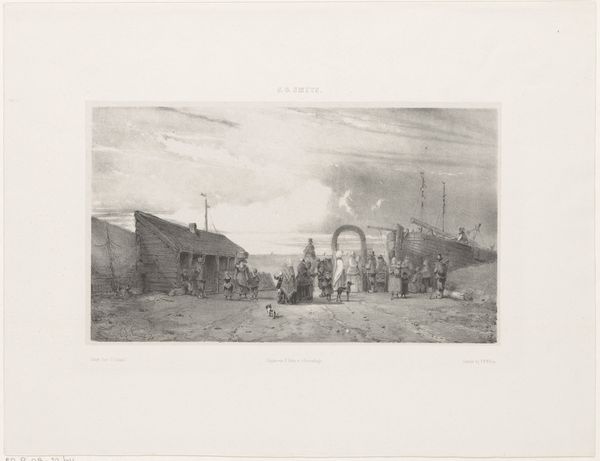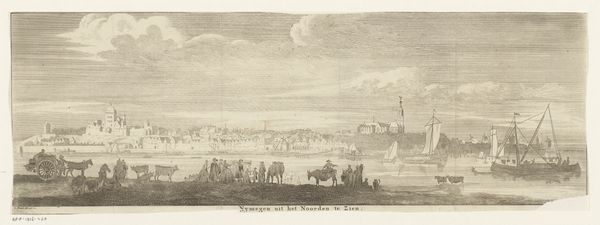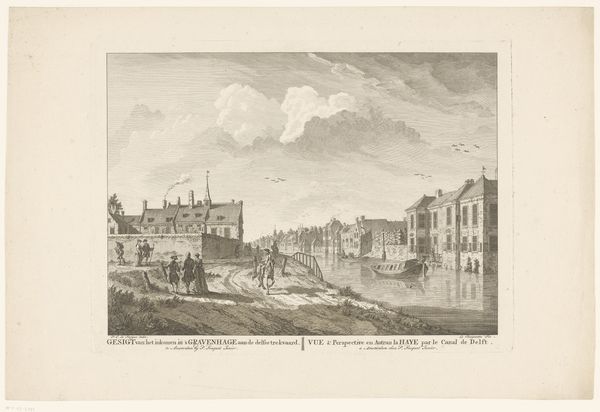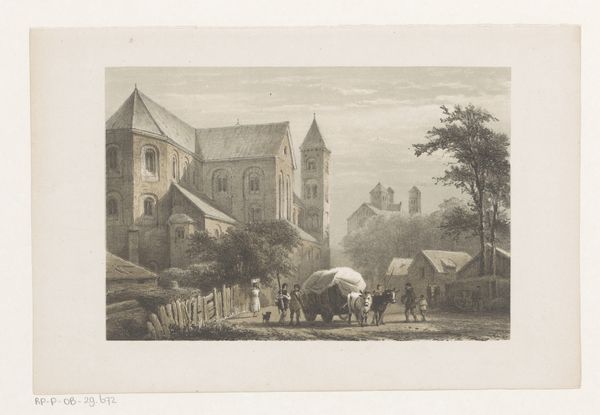
print, engraving
# print
#
old engraving style
#
landscape
#
historical photography
#
romanticism
#
19th century
#
cityscape
#
engraving
Dimensions: height 119 mm, width 176 mm
Copyright: Rijks Museum: Open Domain
Curator: Looking at this print, what strikes you first? Editor: The stillness, almost a quiet resignation, despite all the implied activity. It's very balanced and calm for a cityscape scene. What can you tell me about the piece? Curator: This engraving is called "Gezicht op Mannheim," or "View of Mannheim." Its creation is credited to Thomas Barber, dating from somewhere between 1805 and 1843. Note the delicate, meticulous lines that define the architectural elements. Editor: The buildings do seem very intentionally placed within the composition. I am especially drawn to the horizon line created by the cityscape, it sits perfectly in the upper-middle area of the artwork, with the artist placing different buildings to either side of the print to give the effect of a fisheye, so your eye naturally gravitates towards the skyline. Do we know much about the urban and social context here? Curator: Absolutely, during this time, Mannheim was undergoing significant development as a prominent city-state in the Rhineland. It was a strategically vital location, thus constantly shaped by political and military influences. Artists depicted Mannheim to project both civic pride and attract investment, emphasizing order and prosperity after the Napoleonic upheavals. Editor: You can definitely sense that attempt at order. Though technically precise, the use of engraving produces an ethereal quality, almost romantic. Perhaps a comment on the ephemerality of such grand visions? Curator: Or perhaps highlighting the contrast between industry and idealism? The bridge, and riverside commerce, are central to the piece but rendered with softened edges, suggesting possibility over hard reality. The texture of the entire ground plane shifts the composition from a 2D drawing to a vivid artistic representation of an era and location, through only black ink. Editor: So we're not just seeing a depiction of a place, but also an ideal, constructed through light, line, and ultimately, politics. Interesting. Curator: Precisely! It pushes us to consider: how do artistic choices reflect, or even construct, a certain perspective of an environment. Editor: Right, it's fascinating how the interplay of technique, form, and socio-political intentions combine.
Comments
No comments
Be the first to comment and join the conversation on the ultimate creative platform.
